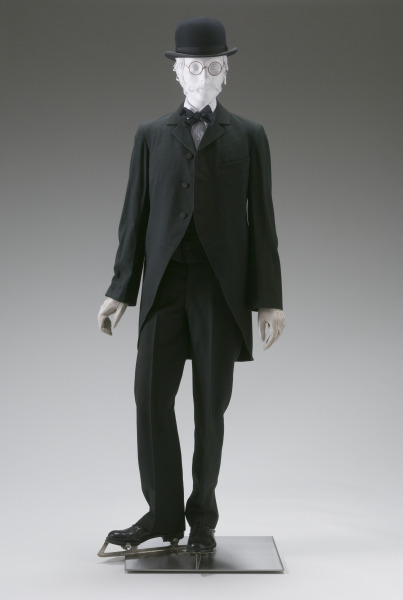The Mint Museum has pieces of its collection spread across two buildings; Mint Museum Uptown and Mint Museum Randolph. These collections can be seen on view alongside our special exhibitions.
The Mint Museum is working diligently to ensure that all objects from our collection are represented on our website, at this time only a portion are available for view.
wool (textile)
Not currently on view
Gift of the Mint Museum Auxiliary, donated by Mrs. W.R. Reid
The three-piece suit as routine daywear for men originated in the 1880s and continued into the 20th century with little change to the matching of coat, vest, and trousers cut from the same cloth. This attire became the mainstay of a gentleman’s business and leisure garments in the late 19th century. Variety came in the form of the cut of the pockets (patch, rounded or straight) buttons (3 versus 4 closures) on the coat, trousers finished with a creased or non-creased press, and vests that were either single or double breasted variations. A range of fabrics were used; black and navy blue were the two most popular colors. Although the three-piece suits may appear to be the staple of a man’s wardrobe, a selection of suits was also designed specifically for various sports activities, at home leisure, and formal occasions. In North Carolina, the Belk Departments Stores began as a small bargain shop opened by William Henry Belk in the town of Monroe on 29 May 1888. In 1891, John Belk joined the business which became Belk Brothers Company. The first Charlotte store opened in 1895.
Accession Number: 1993.24.9A-C
Measurements:
Copyright Information:
public domain
In order to access a high-resolution image, please submit a request via the Mint’s Reproduction Request Form. Fees may apply.

All records for works of art published on mintmuseum.org have been reviewed by curatorial staff but may be incomplete. Our collections database comprises information gathered over the museum’s history; consequently, some records may be missing information, include offensive or discriminatory language, or reflect outdated ideas and analyses. The Mint is committed to addressing these issues and revising our records so as to maintain the highest possible degree of accuracy in accordance with scholarly standards.
If you would like to suggest improvements to a record, please submit your feedback here.
The Museum assumes no responsibility for infraction of copyright laws, invasion of privacy or improper and /or illegal use that may arise from reproduction of this image. The user assumes full responsibility for the use of images obtained from the Museum, to obtain permission from copyright holders where applicable and to hold harmless the Museum and its agents against any and all damages and claims arising or resulting from the use of the images.